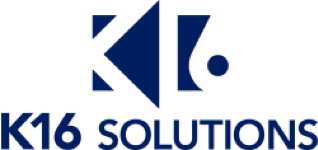The Future of Data Governance in Higher Education
In my role as Chief Operating Officer at K16 Solutions, I’ve had hundreds of conversations with academic technology leaders at institutions large and small about the role of data governance in higher education. What I’ve learned from those leaders is that at their core, they’re simply looking to keep their data secure, private, accurate, available, and usable. It doesn’t seem like an unrealistic expectation—yet, for some reason, in higher education, it is.
I’m excited to be invited as a panelist during InstructureCon 2023’s fireside chat as part of the event’s keynote. I’ll be using this opportunity, alongside Seminole State, to talk about the future of data governance in higher education. But, as a precursor to this event, I want to just briefly touch on some of the topics I’ll be addressing more broadly at InstructureCon. That is, my take on what data governance means to higher-ed data professionals today, the biggest problem that institutions face with their data, and how it’s possible to truly unify that data.
What data governance means now
Institutions have amassed incredibly valuable data over the years and even decades. What we’re now seeing is that forward-thinking institutions are evaluating not just how to view that data but how to classify, define, organize, and communicate that data.
Higher-ed professionals are realizing they can use this data responsibly to improve student outcomes and think about their institutions’ financial longevity. This information can help drive student success, student outcomes, and retention. Ultimately, the data they’re collecting can help institutions take the leap to the next level as effective educators.
Finding ways to unlock that data will separate the successful institutions from those that can never evolve.
The big problem: data silos
Unfortunately, as valuable as data collection is, much of the data schools end up with are separated among various, complex ecosystems, making holistic, strategic planning difficult or even impossible.
As we move forward, one thing is clear: institutions must find a way to unify their data sources.
The future of data governance: unifying data
Because the market does not have any real solutions that can accurately and effectively unify data across enterprise systems–at least, not in the way academic technology leaders need–we have been working on that exact problem with our new solution: Scaffold DataX.
Starting with Canvas (LMS) and Ellucian Banner (SIS), Scaffold DataX extracts the data from those systems, places it in a neutral data model, and stores it in a data lakehouse so that student submissions (discussions, quizzes, assignments, etc.) are available with grades, course progression, demographics, and related data. The result is a unified, complete, and more accurate view of that enterprise data.
To be clear, K16’s role in this evolution of data governance is not to lecture institutions about how they should use this data or what to do with it, but to provide them with complete access to a unified view of their own data so they can best determine how to use it in a way that makes sense for them.
If you are attending InstructureCon 2023, please join me for K16 Solutions’ fireside chat on Thursday, July 27th, where I will dive deeper into this topic.

